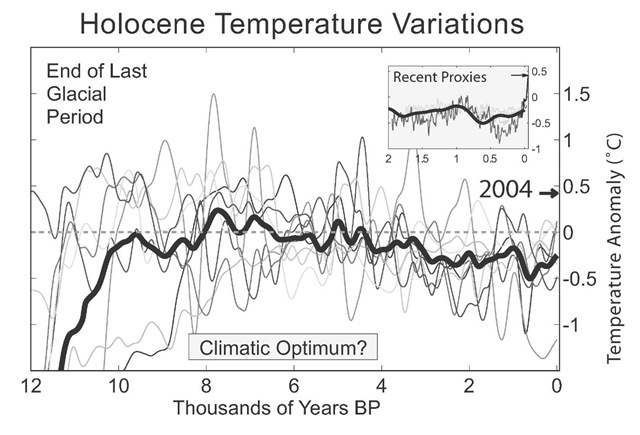The main figure shows eight records of local temperature variability on multi-centennial scales throughout the course of the Holocene, and an average of these (thick dark line). The records are plotted with respect to the mid-20th-century average temperatures, and the global average temperature in 2004 is indicated. The inset plot compares the most recent two millennia of the average to other high resolution reconstructions of this period. At the far left of the main plot climate emerges from the last glacial period of the current ice age into the relative stability of the current interglacial. There is general scientific agreement that during the Holocene itself temperatures have been quite stable compared to the fluctuations during the preceding glacial period. The average curve above supports this belief. However, there is a slightly warmer period in the middle which might be identified with the proposed Holocene climatic optimum. The magnitude and nature of this warm event is disputed, and it may have been largely limited to summer months and/or high northern latitudes.
Because of the limitations of data sampling, each curve in the main plot was smoothed, and consequently, this figure can not resolve temperature fluctuations faster than approximately 300 years. Further, while 2004 appears warmer than any other time in the long-term average, an observation that might be a sign of global warming, it should also be noted that the 2004 measurement is from a single year. It is impossible to know whether similarly large short-term temperature fluctuations may have occurred at other times but are unresolved by the resolution available in this figure. The next 150 years will determine whether the long-term average centered on the present appears anomalous with respect to this plot. Since there is no scientific consensus on how to reconstruct global temperature variations during the Holocene, the average shown here should be understood as only a rough, quasi-global approximation to the temperature history of the Holocene. In particular, higher resolution data and better spatial coverage could significantly alter the apparent long-term behavior.

